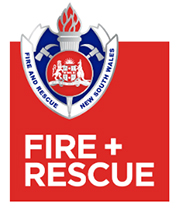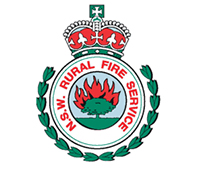Fire Safety
Microwave oven fire safety
The Fire & Rescue NSW recommends these simple fire safety tips when using microwave ovens.
- Before using a new microwave oven, always follow the manufacturer’s installation and operating instructions and safety precautions.
- To minimise the risk of fire, never attempt to heat articles that are not approved for use in microwave ovens.
- Do not use metal, metal edged bowls, metal foil or even twist ties in microwave ovens. The metal can cause arcing which can lead to a fire.
- Never attempt to dry or sterilise clothes or blankets in microwave ovens as a fire may result when the items are removed from the oven.
- Clean the microwave oven regularly, this will reduce fire potential. Clean the oven cavity and the outer edge of the cavity. Always unplug the oven when cleaning.
- Never use recycled paper in microwave ovens unless they are specifically approved for microwave use. Recycled products including paper towels have minute metal flecks; these can cause sparks and even flames.
- Only use microwave-safe utensils. The instructions for the microwave oven often specify what types of containers etc are safe to use for that appliance.
- When cooking popcorn heat according to the instructions, begin with the minimum time specified as some microwaves can scorch popcorn in as little as two minutes.
- Heating of wheat bags has a fire risk, never heat longer than manufacturer’s instructions and never more than a maximum of 3 minutes, adding oils to wheat bags increases the fire risk. Home made wheat bags have a higher risk. Continual heating and drying of wheat bags increases the risk. Adding a cup of water in the microwave should decrease the risk. Click here to view the wheat bag fire safety fact sheet.
- Never heat flammable or combustible liquids in the microwave – a fire or explosion may occur.
- Be extremely careful when removing heated liquids and food from the microwave, the container may only feel warm but the contents are extremely hot. Many scald burns have resulted from the removal of liquids and foodstuffs from the microwave, especially when used by children. Allow the food or liquid to sit for 60 seconds before removing. Be careful of steam escaping when removing wrappers.
- If you have a fire in the microwave oven, turn off the oven immediately and unplug the power cord if safe to do so. Do not open the door of the microwave, simply wait till the fire suffocates, never open the door until you are absolutely sure the fire is out. Dial Triple Zero (000) and ask for Fire.
In 2004 the FRNSW reported attending 4,226 house fires. Of those, 1007 were caused by unattended heat sources such as foodstuffs on stoves and another 430 by electrical short circuits. The areas of the house where most fires occur are the kitchen (1,886) sleeping areas (507) and lounge area (383). Cooking appliances and equipment were involved in 861 fires and heating appliances and systems were involved in 165 fires. (Statistics correct as of 16/06/05)
Printable factsheet
Microwave oven fire safety (PDF, 42Kb)
Fire & Rescue NSW Community Risk Management. Revised 20 October 2005.




